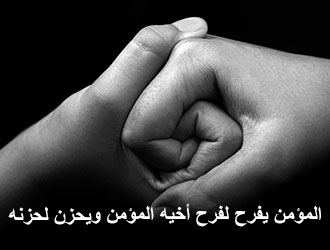Scientific Analysis
Intensive and progressive research has uncovered astonishing facts about the effects on the human body when faced with threats, like injuries or illness.
Lines of defense and functional responses were uncovered, revealing what occurs in the body at the time of an organ’s affliction.
These responses are directly related to the degree the organ suffers. In the case of an organ’s affliction, for example, areas of the brain tell the pituitary gland to secrete a hormone which tells the rest of the endocrine glands to offer secretions to catalyze and direct all parts to help the suffering organ.
The heart, for example, starts beating faster to help the blood circulate and reach the injured organ. At the same time, the blood vessels in the inactive body parts contract, while other vessels in the rest of the body expand in order to send the required amounts of energy, oxygen, antibodies, hormones, and amino acids to the injured part. This helps to resist infection and further injury, and in order to heal quickly.
The body starts to break down part of the stored fats and proteins, in order to provide nutrients for the injured organ. This constant sacrifice continues until the rescue is complete, when the injury or disease is under control, and the affected tissues and cells are repaired.
The call from the injured or infected part resembles an actual distress call. The affected area releases pulses to the sensory and alert centers of the brain. Chemicals are released at the first drop of blood shed or when any tissue is torn. Then, all the organs respond, providing help to the affected organ according to the nature of its injury or disease.
The Miracle
Prophet Muhammad, sallallaahu ‘alayhi wa sallam, explained how the Islamic nation must be regarding its citizens’ mutual love, sympathy, and merciful treatment of one another.
He struck an analogy between the single body when one of its organs suffers; that all of it will be affected thereby. There is no word more concise than tadaa‘i [translated as “sharing”, which is the exegetical understanding, while linguistically it could mean “being in a state of calling one another”] to describe what happens in the body regarding the complaint of one of the organs.
This description came in a short conditional phrase. The condition is the organ’s suffering and the response is tadaa‘i. This miracle is scientific, linguistic, and rhetorical all at once.
He explained the truth of what happens inside the human body where no eye can observe, using comprehensive words to describe what happens with all of the meanings conveyed in the language, and by way of an analogy that incorporates the meaning into the mind.
Most amazing is that doctors have come to use a name for this part of the autonomic nervous system that reacts to bodily risk and illness that describes the reality of what this system does. It is the sympathetic nervous system (SNS), which comprises the meaning conveyed by the Prophet’s, sallallaahu ‘alayhi wa sallam, saying about love, mercy, and sympathy.Dr. ‘Abdullaah ibn ‘Abd Al-‘Aziz Al-Muslih, knowingAllah.com

